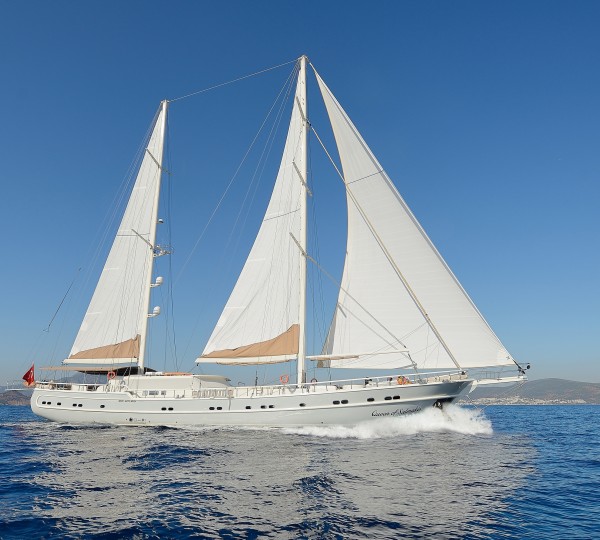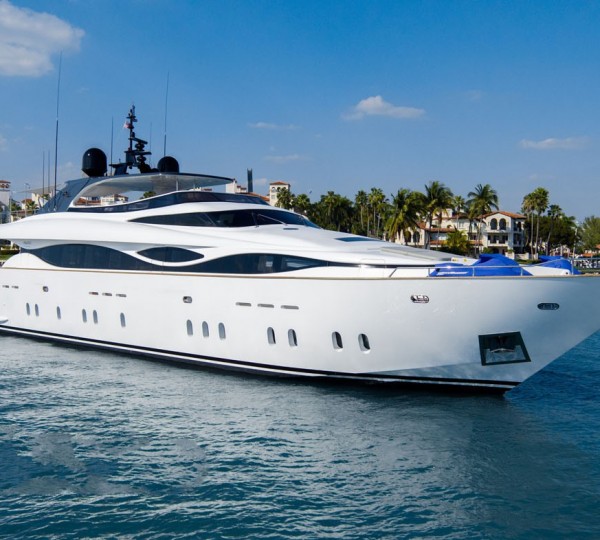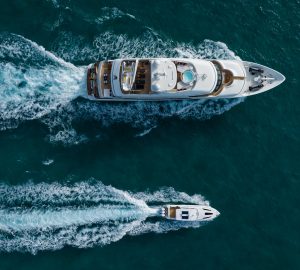
Wind and sea conditions affecting your charter yacht and main sail trim
Below is a list of what main sail controls on your sailboat will create optimal performance for different sailing modes and different conditions.
If you want your sailing yacht to:
Point high, go for speed and accelerate, sail in light winds, sail in moderate winds, sail in strong winds, sail in very strong winds, sail through large swells, sail through sharp bumpy seas - read below:
1. Point High:
This can be done when your yacht is up to speed – you can now convert some of your power and speed into height, to get maximum velocity made good (VMG). You should have the main sail flat, out-hall on, draft forward, cunningham on, traveler up towards the windward side, boom near the yacht's midline (although it rarely needs to be to windward of the carter line, except perhaps in maneuvering at the start or around an obstacle).
2. Go for speed and accelerate when slow:
If the boat is not moving fast - because you have been in pre start maneuvers, been caught up in the fleet, have just rounded a buoy or completed a bad tack, or been caught in a hole - you need to move quickly on the main to increase boat speed again. When a yacht is moving slowly, not only are you going slow but also the apparent wind is moving more slowly over the sail. This means there is less lift force and lower pointing or height. To make matters worse, the helm will be less responsive and the boat speed, what there is of it, will be more vulnerable to ruder movement or crew vibration.
You need to increase the angle of attack on the sail and create a mainsail shape which enables as much lift as possible. To do this pull in the traveler, increase depth and move it further aft by releasing the backstay and out hall. If the leech is too tight you may also consider easing the boom vang and sheet, provided the boom is near the boat center-line. (It may not be practical in terms of time to adjust everything…!) What you are looking for is a full, deep and powerful shape to get the boat moving again. As the yacht accelerates and gains speed the apparent wind accelerates over the sail and the angle of attack moves forward. This is referred to as powering up. The lift force increases, as does the apparent wind, which again increases lift force.
Unfortunately as apparent wind increases the angle of attack moves forward. The appendages also enjoy greater water flow and lift which produces better pointing and the angle of attack moves forward even more. All this necessities further timing. To maintain the sail's optimum angle of attack and the boat's optimum upwind performance you need to sheet in the main. The wind finds it harder to follow the contours of the sail as it travels faster along it. The faster the boat (or plane) goes, the smaller the draft and the flatter the shape of the sail (or wing).
You will need to change the shape from one set for slow apparent wind power to one for faster sailing and higher pointing, as above. This will allow the faster wind to follow the contours of the sail without detaching in the form of drag, and stalling. Do this by drawing out some of the shape and flattening it. Bring on out hall, backstay you can now trim the main to a pointing high mode or speed mode depending on which is more suitable. As the yacht gets towards her optimum speed the helmsman may go for more height. This is where you pull the main further up the traveler.
Final Comments.
Remember that mainsail trim can be boiled down to a couple of basic concepts: sail shape and the angle of the sail to the wind. Generally, you need to be aware what shape is optimal for the wind, sea and boat conditions at any one time. Ideally, you need to be aware what the optimum boat speed is for your boat and conditions. You need to be aware how to adjust your sail shape to suit. Sometimes practice and trial and error is the only way to find the shape and performance you are looking for. Don’t necessarily adjust things automatically, as a matter of course. Diagnose a problem and then solve it accordingly. And yes, I had to say it – “if in doubt ease out”.




